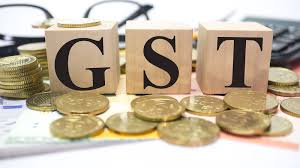
The real-estate sector has consistently played a pivotal role in the country’s GDP. Reports suggest that the real estate sector in India is expected to reach a market size of US$ 1 trillion by 2030 and would contribute 13 percent of the country’s GDP by 2025. In the immediate term, in a report published by CREDAI, there is a strong possibility that the sector could reach a projected market-size of US$ 180 billion by 2020, a sharp rise from US$ 126 billion in 2015. However, despite the contribution of real-estate to the country’s GDP, the sector has longing for a caring treatment from the Government. In this article, I wish to share my views on the recent reduction in the GST rates applicable to the real-estate sector.
In the current dispensation, the general rate of Goods and Services Tax (GST) in respect of under-construction residential properties is 18 percent. However, in respect of construction of residential house properties, which are covered under Affordable Housing Scheme, the rate of GST is reduced to 12 percent. As transfer of a housing project also involves transfer of the undivided portion of land, which has been kept out of the ambit of GST, the rate of GST is calculated after allowing 1/3rd abatement from the value of supply. Hence, the effective rate, after the abatement, comes out to be 12% (18%*2/3) and 8% (12%*2/3) in general cases and in affordable housing schemes respectively.
On February 24, 2019, the GST Council announced a cut in the GST rates on housing projects, in order to boost the real-estate sector. The council announced that on and after April 1, 2019, the new GST rates shall be 5% (instead of 12%) and 1% (instead of 8%), as the case may be. Such reduced rates come with a rider that the builder shall not be allowed to avail of the credit of taxes paid on inputs. In other words, the builders would need to forego the credit of GST paid to procure raw material (i.e., iron, steel and other things) which, in turn, would be the added to the cost of construction and eventually would be recovered from the buyers. The broad features of the said scheme for reduced rates is as follows:
- The said reduced rates of 5 percent and 1 percent are applicable only in respect of residential construction activity comprised of land value. Thus, quite clearly, the reduced rates are not available in respect of commercial properties. Moreover, these are effective rates, which means it will be applied to the total amount charged and not on 2/3 portion of total amount charged.
- There is no benefit available in respect of credit of input tax.
- 80% of the related purchases of inputs would need to be made from registered persons, and the related deficiency or shortage would be liable for GST on reverse charge basis. The satisfaction of the said criterion would be checked on yearly basis.
- The transfer of development rights is exempted, provided residential units are subject to GST at the rate of 5 percent, as above. However, if it is not liable for GST in view of the fact that few or all units sold after completion certificate, then proportionate share on transfer of development right would be liable for GST at the rate of 18 percent by the builders or developer on a reverse-charge basis.
Challenges in the new proposal
The proposals by the GST Council have now thrown various myriad issues, which could result in the benefit turning surreal. These include:
- In a scenario, where a project entails both residential and commercial units, how would be the same be taxed? Would the reduced rate of 5 percent be available in respect of the residential units?
- There is a lack of clarity on the rate to be applied on the deficiency as above. For instance, if the shortage comprises of items subject to varying rates of GST, in what manner would be deficiency be allocated.
- How would the related values be determined in the case of partly completed projects? For instance, a project consisting of 100 units, where 20 units are completed and the balance being under-construction. On a related subject, how would the input tax reversal be done in such cases.
- Where the part of the tax is levied (on account of advances or demand as per completion stage on booking of unit) before effective date and part of the tax to be levied post the effective date. A question would arise on how the tax liability would now be determined on the entire unit. It is also noticeable that meaning of affordable housing is different before and after the effective date.
- The reduced rates are to take effect from 01 April 2019, in which scenario, a key question arises with respect to the fate of input tax credit remaining as on 31.03.2019.
Conclusion
In summary, in my view, the reduced rates of 5% without input tax credit, may only reduce some compliances and accounting inconveniences but would not provide succour or support to the real estate sector. On a comparative reading, it appears that while the rates have been reduced, the net benefit to the customer would be largely insignificant considering the absence of input tax credit. As evident, the issues in the real-estate sector so far as indirect taxation is concerned are endless. One would hope that the Government would not merely resort to hyperbolic overtures of reduced rate cuts, instead focus on alleviating the issues faced by the industry.
[1]Adv Sherry Samuel Oommen, is an Advocate and a qualified Chartered Accountant, Cost Accountant and Company Secretary specialising in tax and corporate laws. He practices in the matters concerning tax, commercial, corporate and labor laws before various Tribunals/ Courts including the High Courts. He is reachable at sherryoommen@nashcp.comor at +91 989 5757 436.
Photo Courtesy : Google/ images are subject to copyright











